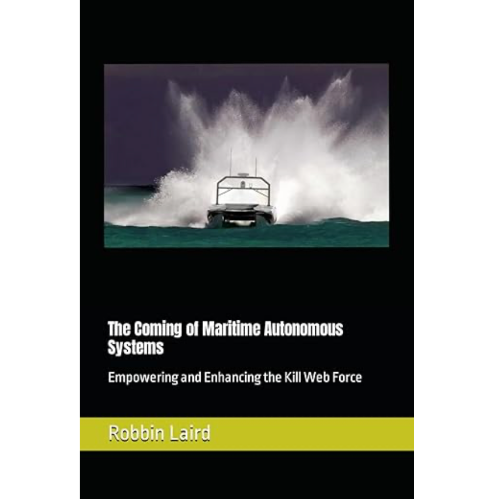This book addresses the coming of maritime autonomous systems to the U.S. Navy and allied fleets. They are obviously coming as well to adversarial forces as well. It is clear that maritime autonomous systems will become a key part of the modernization of the United States (U.S.) and allied security and combat forces. They will also become part of the adversarial forces and will need to be countered as well.
Even though maritime autonomous systems are already here and ready to be deployed. there are the vested interests of maintaining a legacy approach to maritime operations and the thinking associated with such an approach which impede the way ahead.
This book lays out some key developments which have already occurred regarding maritime autonomous systems and what interactive changes between the arrival of such systems and the evolution of concepts of operations might be anticipated.
One such change is the emergence of a new class of ships, which might be called mother ships, and that dynamic is discussed later in the book.
Maritime autonomous systems are not ends unto themselves, but capabilities which enhance the distributed maritime force and its ability to contribute to joint or coalition operations across the spectrum of warfare.
Ranging from weapons to C2 to ISR to logistical payloads, maritime autonomous systems can deliver expanded capabilities to a Navy usually measured in terms of numbers and tonnage of capital ships.
In short, it is a whole new entry point into the future which empowers the force and provides for enhanced capabilities. But to do so is not just about technological development; it is about evolution of concepts of operations and evolving C2 and ISR working relationships for the fleet.
As LtGen (Retired) Steve Rudder, the former MARFORPAC Commander noted in the forward to the book:
“Dr. Robbin Laird has been leading the reporting on Unmanned Systems and Kill Webs for many years and has been producing forward thinking pieces on the evolution of autonomy. At each achievement, whether it be Ukraine, TF-59 in the Arabian Gulf, or the Australian Defense Force, his articles and books have provided a window into the future dominance of autonomous maritime systems and the journey into the Kill Web.”
“The reader of Robbin’s book should walk away with a sense of how autonomous maritime systems are changing how we think about Naval Warfare.”



